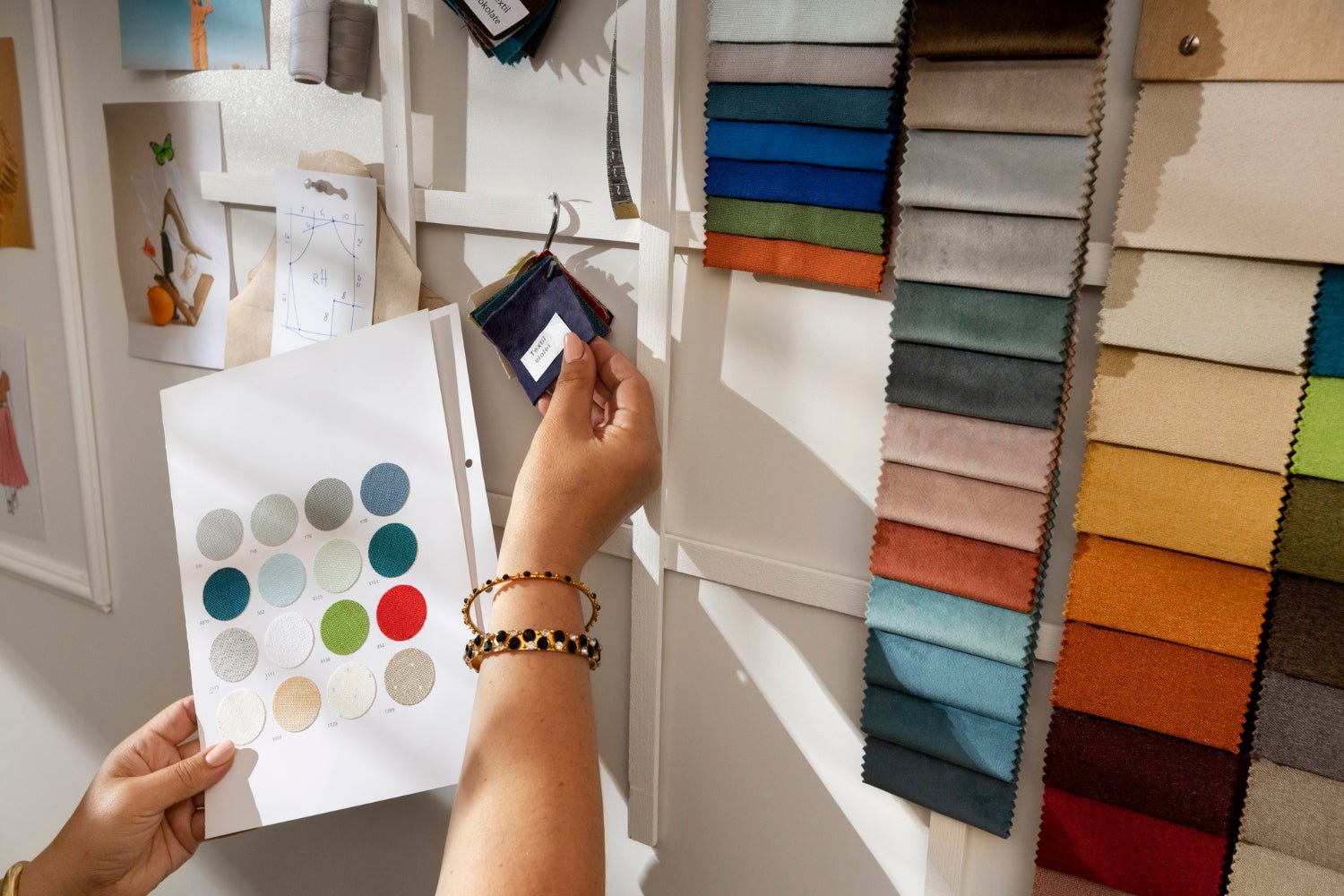The Definitive Guide: Should Your Sofa and Recliner Match?
Table of Contents
- The Great Debate: Matching vs Mixing Furniture
- Decoding Design Elements: What Matching Really Means
- Practical Considerations for Recliners
- The Expert Strategy: Mixing with Purpose
- Matched Sets vs Curated Collections
- Common Mistakes to Avoid
- Cultural Design Perspectives Across Europe
- How Lighting and Space Influence Harmony
- Conclusion
- Frequently Asked Questions
Summary
Your sofa and recliner don’t need to look identical to create a beautiful home. Modern European design favors coordination, not copy-paste matching. When shapes, colors, and materials harmonize through balance and proportion, the result feels personal, not mass-produced.
Perfectly matching furniture sets once symbolized stability. Today, they often represent lost creativity. This guide explores how to blend comfort, culture, and composition,helping you design a living space that feels authentic, cohesive, and emotionally balanced.

1. The Great Debate: Matching vs Mixing Furniture
For decades, families across Europe bought matching sofa-and-chair sets as a sign of order and sophistication. From English countryside homes to Parisian apartments, uniformity represented refinement. But design has evolved.
Matching furniture creates predictability a calm, almost hotel-like symmetry. It appeals to those who crave neatness and harmony.
Mixing furniture, on the other hand, speaks the language of personality. A velvet recliner beside a linen sofa doesn’t clash; it converses. It says, “This home belongs to someone with taste.”
Why some people still choose matching:
- It’s effortless ,one purchase solves everything.
- It offers visual calm, ideal for minimalist spaces.
Why mixing often wins:
- It brings dimension, texture, and emotional warmth.
- It reflects individuality — every choice tells part of your story.

2. Decoding Design Elements: What Matching Really Means
In professional design, “matching” doesn’t mean “identical.” It means relationship and rhythm. A well-coordinated space feels like a conversation — the furniture speaks in harmony, not unison.
Color Coordination
Start with a base palette and build subtle variations:
- Choose one dominant color (like beige or charcoal).
- Add secondary tones (like sage green or dusty rose).
- Finish with accent shades drawn from artwork, rugs, or cushions.

Form and Silhouette
Proportion is a silent storyteller. Curved sofas pair beautifully with recliners that echo similar organic lines. Square, mid-century silhouettes work better with clean-edged recliners.
Avoid extremes: A bulky, overstuffed recliner next to a slimline Scandinavian sofa will feel like two strangers sharing a room.
Texture and Material Harmony
Texture adds emotional depth. Combine tactile contrasts , soft boucle with sleek leather, or matte linen with polished wood accents. The goal isn’t to match materials, but to match mood.

“Texture is like the icing on the cake in interior design. It’s what makes a room feel inviting and complete.” — Candice Olson
3. Practical Considerations for Recliners
Recliners are functional, comfortable, and often large , meaning they visually dominate the room if not balanced properly.
Scale and Balance
If your recliner is oversized, choose a sofa with visual weight to match ,chunkier arms or a low, grounded frame. Conversely, for small urban flats, opt for slimmer recliners that complement sectional sofas without crowding them.
Function and Technology
Modern European recliners include adjustable headrests, USB ports, and power mechanisms. If your sofa has a minimalist aesthetic, choose a recliner with hidden technology and discreet seams for cohesion.
Placement and Flow
Keep your recliner slightly angled instead of aligned with the sofa. Place a floor lamp or side table between them , it creates separation and defines each piece as part of a thoughtful layout rather than random placement.
4. The Expert Strategy: Mixing with Purpose
Blending isn’t about chaos; it’s about controlled contrast. The trick is to let your space breathe while maintaining unity.
The 80/20 Rule
Keep 80% of the space cohesive color tone, material finish, silhouette and let 20% stand out through contrast.
Example: A cream sofa with a moss-green recliner and matching cushion piping feels curated, not accidental.
Unify Through Details
Your furniture doesn’t need to match, but small repeating elements like wood tone, leg design, or stitching pattern can visually tie everything together.
Accessories as Design Glue
Rugs, throws, and wall art bridge gaps. A neutral throw that picks up your recliner’s color instantly links the two pieces emotionally and visually.
5. Matched Sets vs Curated Collections
| Feature | Matched Sets | Curated Collections |
|---|---|---|
| Look | Uniform, consistent | Layered, expressive |
| Effort | Easy | Thoughtful |
| Cost | Lower initially | Higher value over time |
| Flexibility | Static | Adaptable |
| Appeal | Traditional | Design-conscious |
Curated collections dominate European home design today. Instead of buying entire sets, people invest in statement pieces that reflect craftsmanship and cultural influence. In Copenhagen or Milan, for example, homeowners value timeless cohesion over instant uniformity.
When done right, this approach results in homes that evolve naturally spaces that age with grace and intention.
6. Common Mistakes to Avoid
Even experienced decorators stumble when balancing comfort with coordination. Avoid these pitfalls:
-
Ignoring scale — size mismatches ruin visual harmony.
-
Mixing conflicting undertones — warm beige beside cool gray feels off.
-
Overusing one accent color — restraint makes color powerful.
-
Clashing eras — industrial steel next to shabby chic wood confuses the aesthetic.

7. Cultural Design Perspectives Across Europe
European homes often reflect regional identities — each country carries unique design DNA.
Scandinavian minimalism favors simplicity, functionality, and light tones. Sofas and recliners rarely match exactly but share textures like wool or boucle.
French interiors lean toward effortless elegance. Parisians often mix eras — a modern sofa beside a vintage leather chair, unified by symmetry and lighting.
Italian design celebrates luxury and form. Materials like velvet, marble, and metal dominate. Matching is less about similarity and more about sophistication.
German and Dutch styles prioritize function and structure. Their pairing often focuses on clean geometry, neutral palettes, and sustainable materials.
Recognizing these cultural cues can help tailor your home’s look to your personality and lifestyle.
8. How Lighting and Space Influence Harmony
Lighting transforms how colors and fabrics interact. A recliner that looks perfectly coordinated under warm daylight might clash under cool LED lighting.
Natural Light
Maximize window exposure , daylight reveals texture depth and true tones. In smaller flats, use mirrors and pale wall colors to distribute light evenly.
Artificial Light
Layered lighting (floor lamps, sconces, pendant lights) helps control focus. Soft, indirect lighting around the seating area reduces contrast and enhances warmth.
Space Awareness
Don’t overcrowd. European apartments often balance beauty and utility every inch counts. Keep open flow between pieces, allowing furniture to “breathe.”
“Design is defined by light and shade, and appropriate lighting is enormously important.” — Albert Hadley
9. Conclusion
Matching your sofa and recliner perfectly is a thing of the past. The new design language is cohesive individuality ,harmony achieved through thoughtful coordination, not uniformity.
A modern home feels alive when textures, tones, and shapes communicate with intention. Your goal isn’t perfection; it’s connection. The kind that makes guests feel your personality through the layout of the room.
Remember, design is emotional architecture. Every piece you choose builds comfort, confidence, and identity. So whether your recliner and sofa are soulmates or stylish opposites — if they feel good together, they belong together.
10. Frequently Asked Questions
Can a leather sofa work with a fabric recliner?
Yes , as long as their undertones and structure align. A tan leather recliner beside a stone-gray sofa can look elegant if both share soft edges.
How many colors should I use in my seating area?
Stick to three: one dominant, one supporting, one accent. Over three creates chaos; under two creates dullness.
Should my sofa and loveseat match?
They can belong to the same color family but vary in texture — matte versus plush, smooth versus patterned.
What’s the best way to test combinations?
Use AR visualization apps or online configurators offered by European retailers like Made.com or Habitat to preview proportion and light reflection.
How can I make mismatched pieces look intentional?
Repeat one unifying detail — like brass legs, oak finishes, or a shared cushion fabric — across both.
References
Liu, S. (2023). Modern Harmony in Home Design: Balancing Contrast and Coordination. Journal of Interior Aesthetics, 14(2), 88–97. https://doi.org/10.1080/jia.2023.88
Mitchell, L. (2022). The Psychology of Space: How Color and Texture Influence Comfort. Design & Living Quarterly, 9(4), 51–59. https://doi.org/10.1177/dlq.2022.59




 Confex Sofas
Confex Sofas Sofio Poufs
Sofio Poufs




Share:
When did People Start Using Couches? A Historical Timeline
What Couch Fabric Is Easiest to Clean? A Complete Guide for Busy Homes